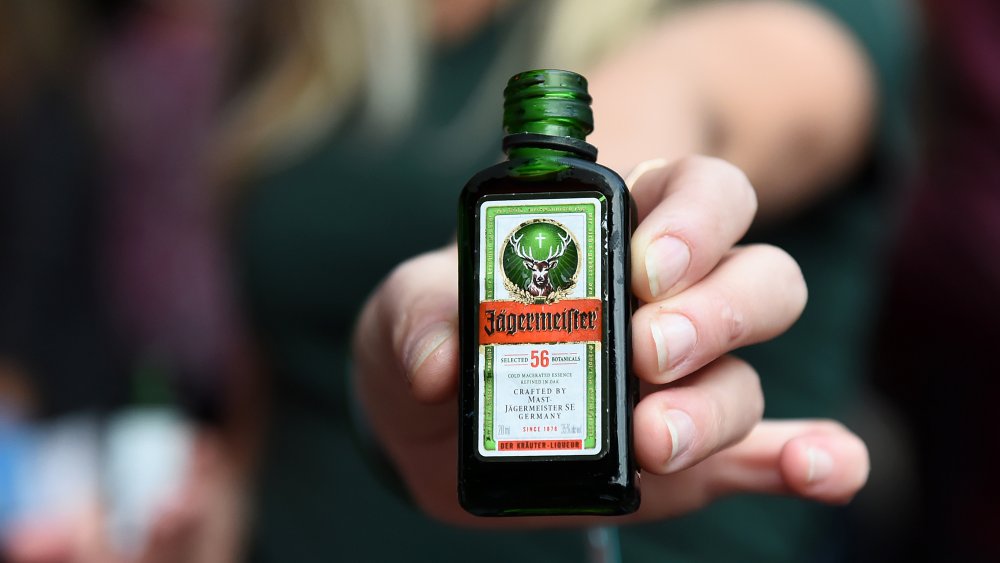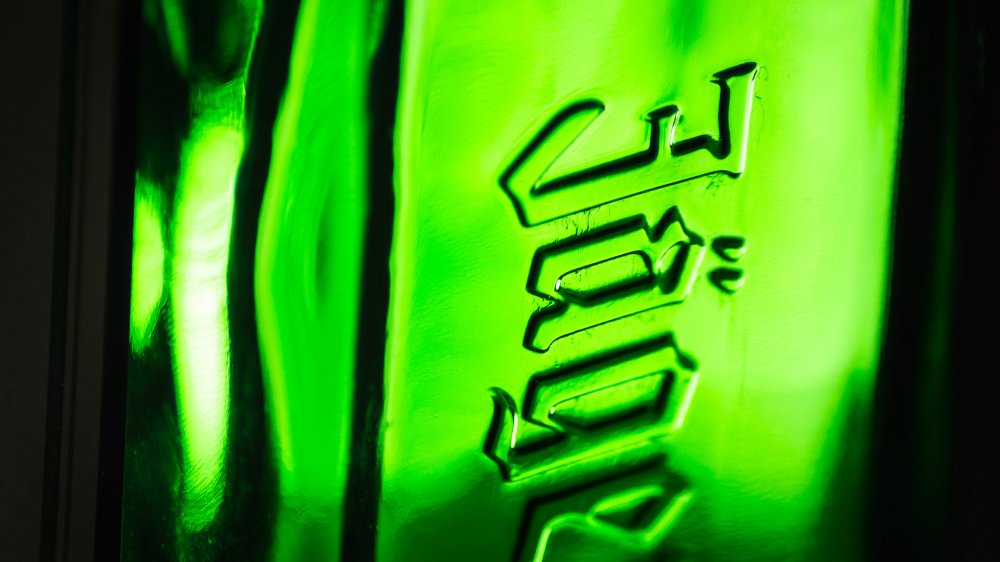How Jagermeister Became So Popular
Inky and herbal with a flavor profile that can only be described as an acquired taste, Jagermeister has a mass appeal that's something of an anomaly. Jagermeister has roots tracing back to 1930s Germany and was the brainchild of Curt Mast, a former vinegar factory owner who turned to the world of spirits. His intention was to create a unique kräutorlikör, or herbal liquor, capable of soothing upset stomachs and treating other ailments (via The Manual). It was made with a proprietary (and top-secret) blend of 56 natural ingredients.
The imposing stag that graces Jagermeister's unique label is a nod to the name of the spirit, whose name means "master hunter" in German. And that trademark green glass bottle wasn't an afterthought. When deciding on which bottle to use for his medicinal liquor, Mast was said to have collected numerous options and tested their durability by dropping them on his kitchen floor. The mythology behind the creation of this curious spirit is fascinating, but just how did Jagermeister gain popularity outside of Germany?
A Louisiana newspaper dubbed Jagermeister 'Liquid Valium'
Jagermeister's successful leap across the pond was thanks to an intrepid businessman named Sidney Frank. Inc. reports that Frank began importing the spirit in 1972. During that time, Jagermeister's primary market was a small, older crowd of Americans of German descent. Frank took it upon himself to broaden the drink's appeal by hiring a cast of Jagerettes, who were scantily clad girls that shot Jagermeister into men's mouths with a spray gun at bars, according to Men's Journal.
While the attractive ambassadors helped up Jagermeister's popularity, it was a mention in a Baton Rouge newspaper that had sales skyrocketing back in 1985. The paper dubbed Jagermeister "Liquid Valium," and Frank used the exposure as an opportunity to dive into heavy-drinking, hard-partying city markets like New Orleans. Frank's third contribution to the legacy of Jagermeister was the introduction of the ice-cold tap machine, a hulking device prominently placed on bars throughout the country, whose function was to dispense perfectly chilled shots (via The Spirits Business).
Towards the tail end of the 1990s, Jagermeister got another boost in popularity thanks to the Jagerbomb, which became synonymous with nightlife. While its origins are unclear, The Morning Advertiser reports that this mix of Jagermeister, Red Bull, and a splash of cranberry juice was never cosigned by the company. Instead, Jagermeister has countered with its own innovation: Jagermeister Cold Brew Coffee, a caffeinated alternative aimed at those looking for a boost of energy in their shot of choice.

